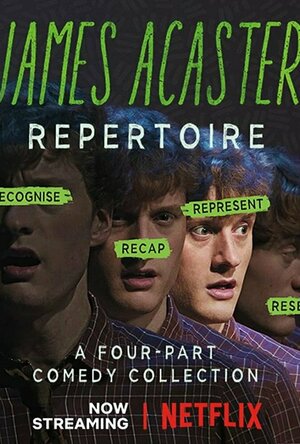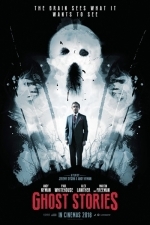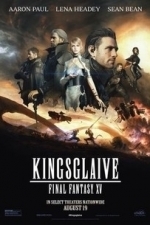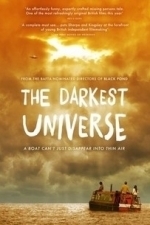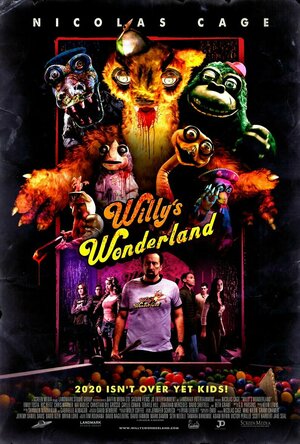Search
Search results
Kirk Bage (1775 KP) rated James Acaster: Repertoire in TV
Aug 6, 2020 (Updated Aug 6, 2020)
I have been a fan of stand up comedy, erm, all my life… well, at least since Billy Connely kinda invented it, in a way that wasn’t all about hating the mother in law and homophobia. When I moved to Edinburgh in 1999, I found myself at the epicentre of new comedy, every August at the unparalleled event that is the Fringe Festival.
Over the years I have seen most of the living greats at the art live, be it a full show or a smaller set at the legendary bullpit of Late and Live. Sad exceptions being Eddie Izzard and Dylan Moran, still on the bucket list. It has given me a pretty good eye for who is gonna make it big when they start out. I saw Jack Whitehall aged 16; Jimmy Carr before anyone knew who he was; and many others that have gone on to have decent TV and touring careers.
Having moved to Glasgow in recent years I started to see less comedy. Not that The Stand and other venues don’t have it going on, but because it just feels less of a thing outside of Edinburgh. So, when James Acaster came to my old place of work, the legendary Oran Mor, I booked tickets for myself, my daughter and her boyfriend in a heartbeat.
I had seen him do a lot of Mock The Week and a few other guest spots on TV, and thought from the start that this guy had something kinda special. The main good sign being that he made me laugh! A kind of blonder Jarvis Cocker, with the dress sense to match, he has a quirky, sleepy but cross delivery that is a total winner. He is very fast with an improvised moment, is very clever in his off kilter observations, and charmingly wanders into surreal tangents whenever possible. In other words, totally up my comedy avenue.
I was delighted to see that he had a new four part special on Netflix when I was recently surfing around old comedy shows I’ve seen half a dozen times. Repertoire is consecutive shows that work either alone, or payoff better as a whole, when early jokes get a back reference in a genius fashion. To explain why they are funny is not a thing I’m about to attempt. Comedy is so subjective; if it makes you laugh then it is good, if not… it might still be good, but not for you. You have to watch it to know.
So many highlights. At least three moments that made me have to pause it because I was laughing almost too much and in danger of passing out. Generally, you get a content knowing smile out of it, patting yourself on the back for getting his multi-layered intentions. Some things are just weird or hilarious, but often there is an intelligent point being made on the sly. When the two combine, I find him one of the best around for quality of writing and delivery.
As a side note, in part 3 of Repertoire he makes reference to a recent nightmare gig, when the entire front row of a Glasgow show kicked off and threw verbal abuse at him. That was the show we were at! He handled it remarkably well, turning the final portion of the show into an improv about that, chucked the planned material away. It isn’t every stand-up that can handle hecklers that well. Total kudos, Mr Acaster.
Recommended big time.
Over the years I have seen most of the living greats at the art live, be it a full show or a smaller set at the legendary bullpit of Late and Live. Sad exceptions being Eddie Izzard and Dylan Moran, still on the bucket list. It has given me a pretty good eye for who is gonna make it big when they start out. I saw Jack Whitehall aged 16; Jimmy Carr before anyone knew who he was; and many others that have gone on to have decent TV and touring careers.
Having moved to Glasgow in recent years I started to see less comedy. Not that The Stand and other venues don’t have it going on, but because it just feels less of a thing outside of Edinburgh. So, when James Acaster came to my old place of work, the legendary Oran Mor, I booked tickets for myself, my daughter and her boyfriend in a heartbeat.
I had seen him do a lot of Mock The Week and a few other guest spots on TV, and thought from the start that this guy had something kinda special. The main good sign being that he made me laugh! A kind of blonder Jarvis Cocker, with the dress sense to match, he has a quirky, sleepy but cross delivery that is a total winner. He is very fast with an improvised moment, is very clever in his off kilter observations, and charmingly wanders into surreal tangents whenever possible. In other words, totally up my comedy avenue.
I was delighted to see that he had a new four part special on Netflix when I was recently surfing around old comedy shows I’ve seen half a dozen times. Repertoire is consecutive shows that work either alone, or payoff better as a whole, when early jokes get a back reference in a genius fashion. To explain why they are funny is not a thing I’m about to attempt. Comedy is so subjective; if it makes you laugh then it is good, if not… it might still be good, but not for you. You have to watch it to know.
So many highlights. At least three moments that made me have to pause it because I was laughing almost too much and in danger of passing out. Generally, you get a content knowing smile out of it, patting yourself on the back for getting his multi-layered intentions. Some things are just weird or hilarious, but often there is an intelligent point being made on the sly. When the two combine, I find him one of the best around for quality of writing and delivery.
As a side note, in part 3 of Repertoire he makes reference to a recent nightmare gig, when the entire front row of a Glasgow show kicked off and threw verbal abuse at him. That was the show we were at! He handled it remarkably well, turning the final portion of the show into an improv about that, chucked the planned material away. It isn’t every stand-up that can handle hecklers that well. Total kudos, Mr Acaster.
Recommended big time.

The Last Collection
Book
An American woman becomes entangled in the intense rivalry between iconic fashion designers Coco...
Historical Romance
Bob Mann (459 KP) rated Ghost Stories (2018) in Movies
Sep 29, 2021
In that sleep of death, what dreams may come.
“Ghost Stories” is based on the spooky London West-End stage play by Jeremy Dyson and Andy Nyman who both write and direct the film version. I didn’t know this until the end credits, but began to wonder in the final act where the action suddenly becomes very “stagey” in nature. The screenplay was always bound to be both bizarre and intriguing, since Dyson has been a past contributor to TV’s “League of Gentlemen” and other equally surreal programmes and Nyman has been a major collaborator with the stage-illusionist Derren Brown.
Nyman himself plays TV paranormal debunker Professor Goodman who receives a surprise message from a respected colleague, long thought dead, who on his death bed wants Goodman to investigate the three cases from his career that he was never able to debunk. The first concerns Tony Matthews (Paul Whitehouse, “The Death of Stalin“) as a night watchman at a spooky old asylum; the second concerns Simon Rifkind (Alex Lawther, young Turing in “The Imitation Game“) as a freaked-out young man with a forest breakdown; and Mike Priddle (Martin Freeman, “Black Panther“) as a rich broker with parenting issues. As Goodman investigates each case weirder and weirder things start to happen: is this his mind playing tricks as his faith is rocked, or is there something more sinister going on?
The primary issue I have with this film is its portmanteau nature, harking back to similar films like “The Twilight Zone: the Movie”. Having three segments, loosely linked together, feels like a clunky device for a feature film…. (“Why are there three cases to investigate? Well, two would have made the film too short, and four would have made it too long!”).
That being said, the overall story arc and the drawing together of the strands for the unexpected (although not terribly original) conclusion, is intriguing.
The film looks and feels like a British-made horror film, which is both a compliment and a criticism. Who doesn’t like the jump-scares and the vague tackiness of a Hammer horror? But if you care to compare the production values on show here versus “A Quiet Place“, there is no comparison. The location-shot scenes (which are most of the scenes) seem to be very poorly lit: and that’s the non-spooky ones where you are supposed to see what’s going on!
The cast seem to be well-suited to their roles, with Paul Whitehouse in particular being impressive as the ‘on the make’ Matthews, who always feels like being on the knife-edge of violent outburst. I particularly liked Alex Lawther who does “spooked” extremely well! The script also seems to be well-tuned to the characters, with a number of laugh-out-loud lines. “****ing O2” exclaims Simon as he waves his mobile in the air… something the marketing department at the telecoms giant must have loved!
The critics seem to have been overtly positive about this film, which I can’t quite match. Apart from one or two scenes towards the end, all of the jump scares were pretty well signposted in advance. But it’s still as fun as a slightly tacky ghost house ride at the fairground, if you like that sort of thing, and is certainly a much more interesting and better watch in my book than some recent and much higher budget horror films like “It“.
Nyman himself plays TV paranormal debunker Professor Goodman who receives a surprise message from a respected colleague, long thought dead, who on his death bed wants Goodman to investigate the three cases from his career that he was never able to debunk. The first concerns Tony Matthews (Paul Whitehouse, “The Death of Stalin“) as a night watchman at a spooky old asylum; the second concerns Simon Rifkind (Alex Lawther, young Turing in “The Imitation Game“) as a freaked-out young man with a forest breakdown; and Mike Priddle (Martin Freeman, “Black Panther“) as a rich broker with parenting issues. As Goodman investigates each case weirder and weirder things start to happen: is this his mind playing tricks as his faith is rocked, or is there something more sinister going on?
The primary issue I have with this film is its portmanteau nature, harking back to similar films like “The Twilight Zone: the Movie”. Having three segments, loosely linked together, feels like a clunky device for a feature film…. (“Why are there three cases to investigate? Well, two would have made the film too short, and four would have made it too long!”).
That being said, the overall story arc and the drawing together of the strands for the unexpected (although not terribly original) conclusion, is intriguing.
The film looks and feels like a British-made horror film, which is both a compliment and a criticism. Who doesn’t like the jump-scares and the vague tackiness of a Hammer horror? But if you care to compare the production values on show here versus “A Quiet Place“, there is no comparison. The location-shot scenes (which are most of the scenes) seem to be very poorly lit: and that’s the non-spooky ones where you are supposed to see what’s going on!
The cast seem to be well-suited to their roles, with Paul Whitehouse in particular being impressive as the ‘on the make’ Matthews, who always feels like being on the knife-edge of violent outburst. I particularly liked Alex Lawther who does “spooked” extremely well! The script also seems to be well-tuned to the characters, with a number of laugh-out-loud lines. “****ing O2” exclaims Simon as he waves his mobile in the air… something the marketing department at the telecoms giant must have loved!
The critics seem to have been overtly positive about this film, which I can’t quite match. Apart from one or two scenes towards the end, all of the jump scares were pretty well signposted in advance. But it’s still as fun as a slightly tacky ghost house ride at the fairground, if you like that sort of thing, and is certainly a much more interesting and better watch in my book than some recent and much higher budget horror films like “It“.
Acanthea Grimscythe (300 KP) rated Highwayman in Books
May 16, 2018
It's a bit hard for me to really talk about how I felt while reading Highwayman by Craig Saunders. To some extent, I feel that I may not know as much about old lore and mythology as I thought I did - and that's definitely a possibility. The concept behind the book is intriguing, but there are many elements of Saunders story that failed to satisfy me.
In the wake of a plane crash, Karl Goodman finds himself in-between life and death - a sort of limbo that I felt was reminiscent of an episode of Supernatural where Castiel and Dean are fighting vampires in purgatory. I say this largely because of the whole Fog-World/forest atmosphere. In this surreal world, a murderer from centuries past is able to cross the lines between the worlds of the living and dead to continue visiting his reign of horror upon unsuspecting individuals. Guided by the Deans, who appear to be a set of reapers, for lack of a better term (or maybe ferrymen), and a young, comatose girl named Imke, Karl finds himself seeking out this murderous highwayman so that he can exact revenge for his daughter's death.
While I have a strong love for the supernatural and paranormal, I couldn't help but find myself confused more often than not by several aspects of the story. I am, admittedly, ignorant of the White Hart and the Green Man, but I like to think I'm a bit more versed in the many varieties of spooks. In fact, Saunders portrayal of a barrow-wight did not stray unreasonably far from its native draugr. What does baffle me though is how Saunders introduces these supernatural elements into his book. When I received Highwayman, I was expecting something dark and macabre that dealt with... well, with highwaymen. The main villain of the tale is precisely that, but the book itself is largely a ghost story. That isn't necessarily a problem, but it simply did not sit very well with me.
To further complicate the telling of the story, there are far too many differing points of view - five or six, total. (I can't remember if there was a part told from Mr. Dean's perspective.) This makes it hard to keep track of the passage of time, and whether or not that is intentional, I found it bothersome. For instance, at one point Bethany, Karl's wife, does something. Then, for several chapters, the story does not return to her. In fact, the disparity between returning to her point of view was so great that I actually thought that Saunders had forgotten about her.
One of the other issues that bothered me was the circumstances of Karl and Bethany's daughter's death. At first it is explained as a drowning, but then later we learn it was not. Apparently her murder was so horrid that Karl conveniently blocked the tragedy from his mind with a far more "rational" explanation, and to me this felt more like slapping a bandaid on a forgotten plot element than something that was done naturally.
At no point during my reading of this book did I feel any sort of emotion or attachment to any of the characters, and I found that to be extremely disappointing. The cast of Highwayman are not, in any way, extraordinary (well, not depth wise), and that made it harder for me to get into the book.
Overall, I didn't care much for Highwayman; however I will not let that discourage me from reading more of Saunders' work in the future. As part of the DarkFuse Reader's Group, I received an advance copy of this book in exchange for an honest review. I would like to thank DarkFuse, Craig Saunders, and NetGalley for this opportunity.
In the wake of a plane crash, Karl Goodman finds himself in-between life and death - a sort of limbo that I felt was reminiscent of an episode of Supernatural where Castiel and Dean are fighting vampires in purgatory. I say this largely because of the whole Fog-World/forest atmosphere. In this surreal world, a murderer from centuries past is able to cross the lines between the worlds of the living and dead to continue visiting his reign of horror upon unsuspecting individuals. Guided by the Deans, who appear to be a set of reapers, for lack of a better term (or maybe ferrymen), and a young, comatose girl named Imke, Karl finds himself seeking out this murderous highwayman so that he can exact revenge for his daughter's death.
While I have a strong love for the supernatural and paranormal, I couldn't help but find myself confused more often than not by several aspects of the story. I am, admittedly, ignorant of the White Hart and the Green Man, but I like to think I'm a bit more versed in the many varieties of spooks. In fact, Saunders portrayal of a barrow-wight did not stray unreasonably far from its native draugr. What does baffle me though is how Saunders introduces these supernatural elements into his book. When I received Highwayman, I was expecting something dark and macabre that dealt with... well, with highwaymen. The main villain of the tale is precisely that, but the book itself is largely a ghost story. That isn't necessarily a problem, but it simply did not sit very well with me.
To further complicate the telling of the story, there are far too many differing points of view - five or six, total. (I can't remember if there was a part told from Mr. Dean's perspective.) This makes it hard to keep track of the passage of time, and whether or not that is intentional, I found it bothersome. For instance, at one point Bethany, Karl's wife, does something. Then, for several chapters, the story does not return to her. In fact, the disparity between returning to her point of view was so great that I actually thought that Saunders had forgotten about her.
One of the other issues that bothered me was the circumstances of Karl and Bethany's daughter's death. At first it is explained as a drowning, but then later we learn it was not. Apparently her murder was so horrid that Karl conveniently blocked the tragedy from his mind with a far more "rational" explanation, and to me this felt more like slapping a bandaid on a forgotten plot element than something that was done naturally.
At no point during my reading of this book did I feel any sort of emotion or attachment to any of the characters, and I found that to be extremely disappointing. The cast of Highwayman are not, in any way, extraordinary (well, not depth wise), and that made it harder for me to get into the book.
Overall, I didn't care much for Highwayman; however I will not let that discourage me from reading more of Saunders' work in the future. As part of the DarkFuse Reader's Group, I received an advance copy of this book in exchange for an honest review. I would like to thank DarkFuse, Craig Saunders, and NetGalley for this opportunity.
Chris Sawin (602 KP) rated Paprika (2006) in Movies
Jun 19, 2019
The DC Mini was created to not only record and watch a person's dreams, but to actually enter them as well. It was created by Kosaku Tokita at the Foundation for Psychiatric Research and was meant to be a form of therapy to help people find the purpose of manic disorders and other manias such as fear or anxiety issues. But when the DC Mini is stolen and the same dream is being implanted into people while they're awake with chaotic results, then the research foundation takes it upon themselves to try and find out who is behind all of this. Tokita, along with Atsuko Chiba and Torataro Shima, are on the case. But who is Paprika and how does Detective Toshimi Konakawa fit into the equation?
Let me just start off by saying I loved this film. It is weird, it is unusual, and it's creatively original. I think those are some of the best reasons to like Paprika other than the fact that the animation is incredibly fluid and crisp and the story is quite good, but we'll come back to those points shortly. With a film like Paprika that is so complex and so good, there's a lot of key points to mention.
There seems to be so much going on in the film even though it pretty much centers around one dream and it's a dream for the ages. One of the things I love about Paprika is that whenever this dream is implanted into somebody while they're awake, they just start spitting this random gibberish that doesn't make sense until you actually see the dream and see this parade. The way this parade bleeds into not only Detective Kogawa's dream, but into the real world is also a sight within itself.
Over the years I've found that not only anime fans but fans of foreign cinema prefer to watch the film in its natural language with subtitles rather than the English dubbed version. I'm not talking about someone who just watches anime occasionally, but die hard fans. The English dubbing used to be pretty bad on a lot of anime titles, but it's either progressed quite a bit since I last watched a dubbed title or this film is an exception. I had no problems watching the English dub of Paprika. The voices all fit the characters, it was synced up well, nothing really sounded out of place. I'd actually recommend the English dub over the subtitled version. The audio, in general, was very good. The soundtrack also fit Paprika like a glove. The music during the parade dream is a perfect example of this.
The animation of Paprika is where the film really shines. Each surreal dream is illustrated beautifully and each cel of animation flows in an almost realistic fashion. It's some of the best animation I've seen in an animated film that isn't entirely CGI. The story also reeled me in since what started off as something somewhat simple wound up being more complex than what I once thought. Most of Tokita's dialogue where he's describing why he created the DC Mini and it's purposes are a huge mouthful of scientific jargon that's hard to comprehend to its full extent on the first viewing of Paprika. I got more than what I expected story-wise and I was extremely happy with that.
Paprika is an extremely well animated, intelligent, trip into one's imagination that I'd recommend to anyone. The best way I can describe the film is by saying it's kind of like Akira with a story that actually makes sense. Track this film down, whether you're a fan of animated films or not. I think you'll be pleasantly surprised.
Let me just start off by saying I loved this film. It is weird, it is unusual, and it's creatively original. I think those are some of the best reasons to like Paprika other than the fact that the animation is incredibly fluid and crisp and the story is quite good, but we'll come back to those points shortly. With a film like Paprika that is so complex and so good, there's a lot of key points to mention.
There seems to be so much going on in the film even though it pretty much centers around one dream and it's a dream for the ages. One of the things I love about Paprika is that whenever this dream is implanted into somebody while they're awake, they just start spitting this random gibberish that doesn't make sense until you actually see the dream and see this parade. The way this parade bleeds into not only Detective Kogawa's dream, but into the real world is also a sight within itself.
Over the years I've found that not only anime fans but fans of foreign cinema prefer to watch the film in its natural language with subtitles rather than the English dubbed version. I'm not talking about someone who just watches anime occasionally, but die hard fans. The English dubbing used to be pretty bad on a lot of anime titles, but it's either progressed quite a bit since I last watched a dubbed title or this film is an exception. I had no problems watching the English dub of Paprika. The voices all fit the characters, it was synced up well, nothing really sounded out of place. I'd actually recommend the English dub over the subtitled version. The audio, in general, was very good. The soundtrack also fit Paprika like a glove. The music during the parade dream is a perfect example of this.
The animation of Paprika is where the film really shines. Each surreal dream is illustrated beautifully and each cel of animation flows in an almost realistic fashion. It's some of the best animation I've seen in an animated film that isn't entirely CGI. The story also reeled me in since what started off as something somewhat simple wound up being more complex than what I once thought. Most of Tokita's dialogue where he's describing why he created the DC Mini and it's purposes are a huge mouthful of scientific jargon that's hard to comprehend to its full extent on the first viewing of Paprika. I got more than what I expected story-wise and I was extremely happy with that.
Paprika is an extremely well animated, intelligent, trip into one's imagination that I'd recommend to anyone. The best way I can describe the film is by saying it's kind of like Akira with a story that actually makes sense. Track this film down, whether you're a fan of animated films or not. I think you'll be pleasantly surprised.
Gareth von Kallenbach (980 KP) rated Kingsglaive: Final Fantasy XV (2016) in Movies
Jul 15, 2019
It seems like just last week that the creators of the Final Fantasy game franchise sought to bring their vision of the universe they created, and their story, to the silver screen. Well, okay. It wasn’t last week. It’s actually been about 15 years since this really took place in 2001.
I remember being extremely excited for Final Fantasy: The Spirits Within, but the movie itself escapes me today. I think the lack of a lasting impact could have to do with those same creators scrambling to find the distinction between a wide-release movie and a game they’re already heavily invested in. After re-visiting the film, I remember my initial thoughts and they remain the same today. The nowhere-near-photo-realistic animated characters battled and chased each other to and fro in a tale that made little to no sense, with or without the rules of the (bad for its time) computer animated gamescape it’s all set in.
Flash back forward to today, another Japanese made FF movie makes its way to the screen via Kingsglaive: Final Fantasy XV. Kingsglaive represents a quantum leap forward in animation and design, if not a great leap in mo-cap technology and story. The images are far more flexible, more mobile, and more tactile; though, the faces still lack expression, much less what anyone could called subtle or nuanced. The backdrops are striking and surreal, on a par with many of the big sci-fi and fantasy films hitting theaters these days.
But, take away the advertorial nature of Kingsglaive, ignore its use as a cheat sheet, prep for the players of various corners of the game world it depicts, and deal with it as a story with characters and incidents anybody not devoted to the game would watch, and it’s the same old, same old when it comes to FF. It remains a misshapen mash-up heavy with sci-fi fantasy exposition and a back story so convoluted that a single two-hour movie cannot encapsulate it.
Kingsglaive dwells mostly in the realm of fantasy, inside a universe of medieval castles, steampunk weaponry, armor, and creatrues. A world where the Kingdom of Lucis faces a new threat at the end of an uneasy peace with the Niflheim Empire. There’s a magic crystal (of course there is) and the only warriors King Regis (Sean Bean) trusts to defend it are his Kingsglaive, who are empowered by the magic of their sovereign. There are tusked wildebeest warhorses. You would think these would be the point of reference when someone shouts, “Release the DEMON!” But no, they’re actually talking about war crabs – crabs that spit out a hailstorm of fireballs.
The stakes are high, and there’s been quite a bit of intermixing of Lucians and Niflheimers in the “hundred years of peace”, but anti-immigrant backlash rears its ugly head. Taunts and slurs against the immigrants are present, as is there a wall – who says video game movies can’t be topical. With the immigrants who must prove themselves, there are good soldiers, an evil prince, all with tongue-twisting names like Lenafreya Nox Fleuret, should you choose to try and remember them.
The dialogue, delivered by the likes of Aaron Paul and Lena Heady, could have been better. Though I don’t so much blame the voice talent as much as I do the script itself, with classics like “Get back here alive! That’s an order!” and “You speak of matters beyond the wall.”
Probably the biggest thing most movie fans will remember, is the name of the city under threat. It probably has the silliest name this side of Raccoon City. They call it, Insomnia. Which is kind of ironic, because Kingsglaive may be a cure for the condition for some.
I remember being extremely excited for Final Fantasy: The Spirits Within, but the movie itself escapes me today. I think the lack of a lasting impact could have to do with those same creators scrambling to find the distinction between a wide-release movie and a game they’re already heavily invested in. After re-visiting the film, I remember my initial thoughts and they remain the same today. The nowhere-near-photo-realistic animated characters battled and chased each other to and fro in a tale that made little to no sense, with or without the rules of the (bad for its time) computer animated gamescape it’s all set in.
Flash back forward to today, another Japanese made FF movie makes its way to the screen via Kingsglaive: Final Fantasy XV. Kingsglaive represents a quantum leap forward in animation and design, if not a great leap in mo-cap technology and story. The images are far more flexible, more mobile, and more tactile; though, the faces still lack expression, much less what anyone could called subtle or nuanced. The backdrops are striking and surreal, on a par with many of the big sci-fi and fantasy films hitting theaters these days.
But, take away the advertorial nature of Kingsglaive, ignore its use as a cheat sheet, prep for the players of various corners of the game world it depicts, and deal with it as a story with characters and incidents anybody not devoted to the game would watch, and it’s the same old, same old when it comes to FF. It remains a misshapen mash-up heavy with sci-fi fantasy exposition and a back story so convoluted that a single two-hour movie cannot encapsulate it.
Kingsglaive dwells mostly in the realm of fantasy, inside a universe of medieval castles, steampunk weaponry, armor, and creatrues. A world where the Kingdom of Lucis faces a new threat at the end of an uneasy peace with the Niflheim Empire. There’s a magic crystal (of course there is) and the only warriors King Regis (Sean Bean) trusts to defend it are his Kingsglaive, who are empowered by the magic of their sovereign. There are tusked wildebeest warhorses. You would think these would be the point of reference when someone shouts, “Release the DEMON!” But no, they’re actually talking about war crabs – crabs that spit out a hailstorm of fireballs.
The stakes are high, and there’s been quite a bit of intermixing of Lucians and Niflheimers in the “hundred years of peace”, but anti-immigrant backlash rears its ugly head. Taunts and slurs against the immigrants are present, as is there a wall – who says video game movies can’t be topical. With the immigrants who must prove themselves, there are good soldiers, an evil prince, all with tongue-twisting names like Lenafreya Nox Fleuret, should you choose to try and remember them.
The dialogue, delivered by the likes of Aaron Paul and Lena Heady, could have been better. Though I don’t so much blame the voice talent as much as I do the script itself, with classics like “Get back here alive! That’s an order!” and “You speak of matters beyond the wall.”
Probably the biggest thing most movie fans will remember, is the name of the city under threat. It probably has the silliest name this side of Raccoon City. They call it, Insomnia. Which is kind of ironic, because Kingsglaive may be a cure for the condition for some.
365Flicks (235 KP) rated The Darkest Universe (2016) in Movies
Nov 20, 2019
Talk about a movie where you just don’t know where to start with!! Co-Directors (Yes Co) Tom Kingsley and Will Sharpe have crafted what I can only describe as my favorite completely surreal yet right down to earth drama I have watched in 2016… Wait no… In years.
As I have said recently I am on a real Indie hidden gem kick right now and the ever amazing Phil Wheat of Nerdly.co.uk asked me to check this movie out suspecting that it would be right up my street. The Darkest Universe is an absolute gem of a movie for more reasons than I can explain, but I will try.
Co-Director and Co-Writer Will Sharpe plays highly strung and highly stressed Zac Pratt. We join Zac on the verge of a complete breakdown following the disappearance of his sister and Break-up with his girlfriend. We follow him on somewhat of a journey of self realization and discovery. Zac starts up a fledging blog making video diaries of his search for his sister due to his frustration with the police coming up short. During this time we have a wonderfully interwoven series of flashbacks showing us what happened and giving us breadcrumbs of information.
A movie like this can live or die in the intricate plot woven style and this one flourishes because there is not one unnecessary moment on screen, it all matters. We find that Zac’s relationship with his girlfriend Eva (Sophia Di Martino, Channel 4s Flowers and Casualty) is strained and fragile which leads to a wonderfully awkward marriage proposal failure. While Zac would like us to believe from the get go that his sister Alice (Tiani Ghosh Co-Writer and first time acting, You couldn’t tell) is unhinged we slowly find she is probably the sanest person in his life, as she meets mis-fit wanderer Toby (Joe Thomas Inbetweeners and Fresh Meat). The relationship between Toby and Alice is almost as captivating as Sharpe’s all round performance and is just such a delicious watch.
Okay lets just get to it Will Sharpe in this movie is bloody outstanding. Think about Ezra Miller in We Need to Talk about Kevin, that is how intense this role can get, but he can also switch-up and be this charming at times funny sincere chap. There were moments I just didn’t know where it was gonna go and his performance was layered as such. Of course the script helps aswell because its to the point, at 90 minutes long the movie gets in, messes with your head a bit and gets out. Also no spoilers from me but this movie is never what you think it is and the ending is just a thing of beauty.
I take nothing away from anyone else in this movie because for her first time acting Tiani Ghosh is well above par and her chemistry with Joe Thomas is undeniable. On that note Joe Thomas of Inbetweeners fame was a surprising delight for me in this. A cheeky little cameo from fellow Inbetweener Simon Bird was received well and rounding off our cream of Brit comedy crop Chris Langham (The Thick of It) does not disappoint as Toby’s dad.
I really don’t think you will disappointed if you give this movie a shot, it has all the ingredients of what I would call an indie classic, people will find this movie and talk about it for years to come. Sharpe and Kingsley are a directing duo you have got to keep an eye on. I myself am pissed I never saw there first effort (did I mention this is just there second directorial outing) Black Pond but I will rectify that. They are miles ahead of there Ages and show a level of film-making maturity that most directors will struggle to get to. Effortless and beautiful I am so glad I will be ending 2016 with this movie.
As I have said recently I am on a real Indie hidden gem kick right now and the ever amazing Phil Wheat of Nerdly.co.uk asked me to check this movie out suspecting that it would be right up my street. The Darkest Universe is an absolute gem of a movie for more reasons than I can explain, but I will try.
Co-Director and Co-Writer Will Sharpe plays highly strung and highly stressed Zac Pratt. We join Zac on the verge of a complete breakdown following the disappearance of his sister and Break-up with his girlfriend. We follow him on somewhat of a journey of self realization and discovery. Zac starts up a fledging blog making video diaries of his search for his sister due to his frustration with the police coming up short. During this time we have a wonderfully interwoven series of flashbacks showing us what happened and giving us breadcrumbs of information.
A movie like this can live or die in the intricate plot woven style and this one flourishes because there is not one unnecessary moment on screen, it all matters. We find that Zac’s relationship with his girlfriend Eva (Sophia Di Martino, Channel 4s Flowers and Casualty) is strained and fragile which leads to a wonderfully awkward marriage proposal failure. While Zac would like us to believe from the get go that his sister Alice (Tiani Ghosh Co-Writer and first time acting, You couldn’t tell) is unhinged we slowly find she is probably the sanest person in his life, as she meets mis-fit wanderer Toby (Joe Thomas Inbetweeners and Fresh Meat). The relationship between Toby and Alice is almost as captivating as Sharpe’s all round performance and is just such a delicious watch.
Okay lets just get to it Will Sharpe in this movie is bloody outstanding. Think about Ezra Miller in We Need to Talk about Kevin, that is how intense this role can get, but he can also switch-up and be this charming at times funny sincere chap. There were moments I just didn’t know where it was gonna go and his performance was layered as such. Of course the script helps aswell because its to the point, at 90 minutes long the movie gets in, messes with your head a bit and gets out. Also no spoilers from me but this movie is never what you think it is and the ending is just a thing of beauty.
I take nothing away from anyone else in this movie because for her first time acting Tiani Ghosh is well above par and her chemistry with Joe Thomas is undeniable. On that note Joe Thomas of Inbetweeners fame was a surprising delight for me in this. A cheeky little cameo from fellow Inbetweener Simon Bird was received well and rounding off our cream of Brit comedy crop Chris Langham (The Thick of It) does not disappoint as Toby’s dad.
I really don’t think you will disappointed if you give this movie a shot, it has all the ingredients of what I would call an indie classic, people will find this movie and talk about it for years to come. Sharpe and Kingsley are a directing duo you have got to keep an eye on. I myself am pissed I never saw there first effort (did I mention this is just there second directorial outing) Black Pond but I will rectify that. They are miles ahead of there Ages and show a level of film-making maturity that most directors will struggle to get to. Effortless and beautiful I am so glad I will be ending 2016 with this movie.
Sarah (7800 KP) rated Willy's Wonderland (2021) in Movies
Mar 20, 2021
Could’ve been so much better
If you’ve seen the trailer for Willy’s Wonderland, you were no doubt wondering what on earth your eyes had just been witness to, and I’m afraid the full film doesn’t get any less demented. Willy’s Wonderland is a 2021 horror comedy from director Kevin Lewis that is every bit a modern day B-movie, complete with cheesy script and questionable acting. On paper it sounds like it should be entertainingly bad but silly, but unfortunately in reality it’s just bad.
Willy’s Wonderland follows a drifter (Nicolas Cage) who experiences car troubles on his way cross country, and is tricked into becoming a janitor overnight for the condemned Willy’s Wonderland to pay off his car repairs. Willy’s is a kids restaurant slash indoor play area themed around Willy the weasel and his animatronic friends, including a crocodile, chameleon, gorilla and ostrich. However Willy’s isn’t just your ordinary run down restaurant as it has a dark and horrific history involving murderers, criminals and satanic rituals. Now the friendly animatronic creatures have taken on a murderous life of their own and in a bid to appease them, the town elders (including the sheriff played by Beth Grant) have turned to tricking people travelling through into Willy’s to act as human sacrifices. Unfortunately the townsfolk don’t get quite what they expected with Cage’s unnamed drifter, who alongside local girl Liv (Emily Tosta), gives the demonic creatures a lot more than they bargained for.
I have been dying to watch this film since seeing the trailer. It looked like it’d be absolutely crazy silliness from start to finish and one of those films that are so bad they’re good. But as much as I wanted to like this, I feel like it fell short from what was promised. The first major problem is that it’s meant to be a horror comedy, but there was little humour on offer and the only time I really found myself laughing was at the sheer bizarreness of this entire film. Horror-wise there is a decent amount of blood and gore, but some of it looks badly done and unrealistic and there’s little to be scared of here either. Towards the start of the film there are a few creepy scenes with the animatronic animals, but as the story progresses the scares are lost and this is where the film suffers. It is possible to make a film that’s scary, funny and good (Cabin in the Woods is a shining example), but sadly Willy’s Wonderland doesn’t pull it off.
The fight scenes are lost due to the crazy artistic and surreal style of camera work, meaning you barely have a clue what’s going on and the backing music to accompany these fight scenes doesn’t always work either. And then there’s Nicolas Cage. For some unknown reason, they’ve decided to make his character completely mute with absolutely no dialogue whatsoever. This works in the first few scenes, but as the story unfolds you find yourself crying out for him to say something, anything. If any film was suitable for Cage’s signature crazy eyed overacting, it’s this one and not utilising this is criminal. What were they thinking?! The script isn’t great and the majority of characters are entirely wasted and one dimensional, even for a horror film, with only Emily Tosta coming out of this relatively unscathed, so a bit of Cage’s acting could’ve really helped make this a lot more entertaining.
Willy’s Wonderland had a lot of promise, with an interesting and crazy B-movie horror storyline. However it’s the execution which has let it down, as it’s severely lacking in horror or comedy and doesn’t make use of the cast or promising story. It’s a shame as it’s semi enjoyable as is, but could’ve been so much better!
Willy’s Wonderland follows a drifter (Nicolas Cage) who experiences car troubles on his way cross country, and is tricked into becoming a janitor overnight for the condemned Willy’s Wonderland to pay off his car repairs. Willy’s is a kids restaurant slash indoor play area themed around Willy the weasel and his animatronic friends, including a crocodile, chameleon, gorilla and ostrich. However Willy’s isn’t just your ordinary run down restaurant as it has a dark and horrific history involving murderers, criminals and satanic rituals. Now the friendly animatronic creatures have taken on a murderous life of their own and in a bid to appease them, the town elders (including the sheriff played by Beth Grant) have turned to tricking people travelling through into Willy’s to act as human sacrifices. Unfortunately the townsfolk don’t get quite what they expected with Cage’s unnamed drifter, who alongside local girl Liv (Emily Tosta), gives the demonic creatures a lot more than they bargained for.
I have been dying to watch this film since seeing the trailer. It looked like it’d be absolutely crazy silliness from start to finish and one of those films that are so bad they’re good. But as much as I wanted to like this, I feel like it fell short from what was promised. The first major problem is that it’s meant to be a horror comedy, but there was little humour on offer and the only time I really found myself laughing was at the sheer bizarreness of this entire film. Horror-wise there is a decent amount of blood and gore, but some of it looks badly done and unrealistic and there’s little to be scared of here either. Towards the start of the film there are a few creepy scenes with the animatronic animals, but as the story progresses the scares are lost and this is where the film suffers. It is possible to make a film that’s scary, funny and good (Cabin in the Woods is a shining example), but sadly Willy’s Wonderland doesn’t pull it off.
The fight scenes are lost due to the crazy artistic and surreal style of camera work, meaning you barely have a clue what’s going on and the backing music to accompany these fight scenes doesn’t always work either. And then there’s Nicolas Cage. For some unknown reason, they’ve decided to make his character completely mute with absolutely no dialogue whatsoever. This works in the first few scenes, but as the story unfolds you find yourself crying out for him to say something, anything. If any film was suitable for Cage’s signature crazy eyed overacting, it’s this one and not utilising this is criminal. What were they thinking?! The script isn’t great and the majority of characters are entirely wasted and one dimensional, even for a horror film, with only Emily Tosta coming out of this relatively unscathed, so a bit of Cage’s acting could’ve really helped make this a lot more entertaining.
Willy’s Wonderland had a lot of promise, with an interesting and crazy B-movie horror storyline. However it’s the execution which has let it down, as it’s severely lacking in horror or comedy and doesn’t make use of the cast or promising story. It’s a shame as it’s semi enjoyable as is, but could’ve been so much better!

123 Coloring Book for children age 1-10: Games free for Learn to write the Spanish numbers and words while coloring with each coloring pages
Games and Education
App
Write & Color Spanish numbers 123 numbers Coloring Book | Coloring Free Games for Kids Boy and Girls...
